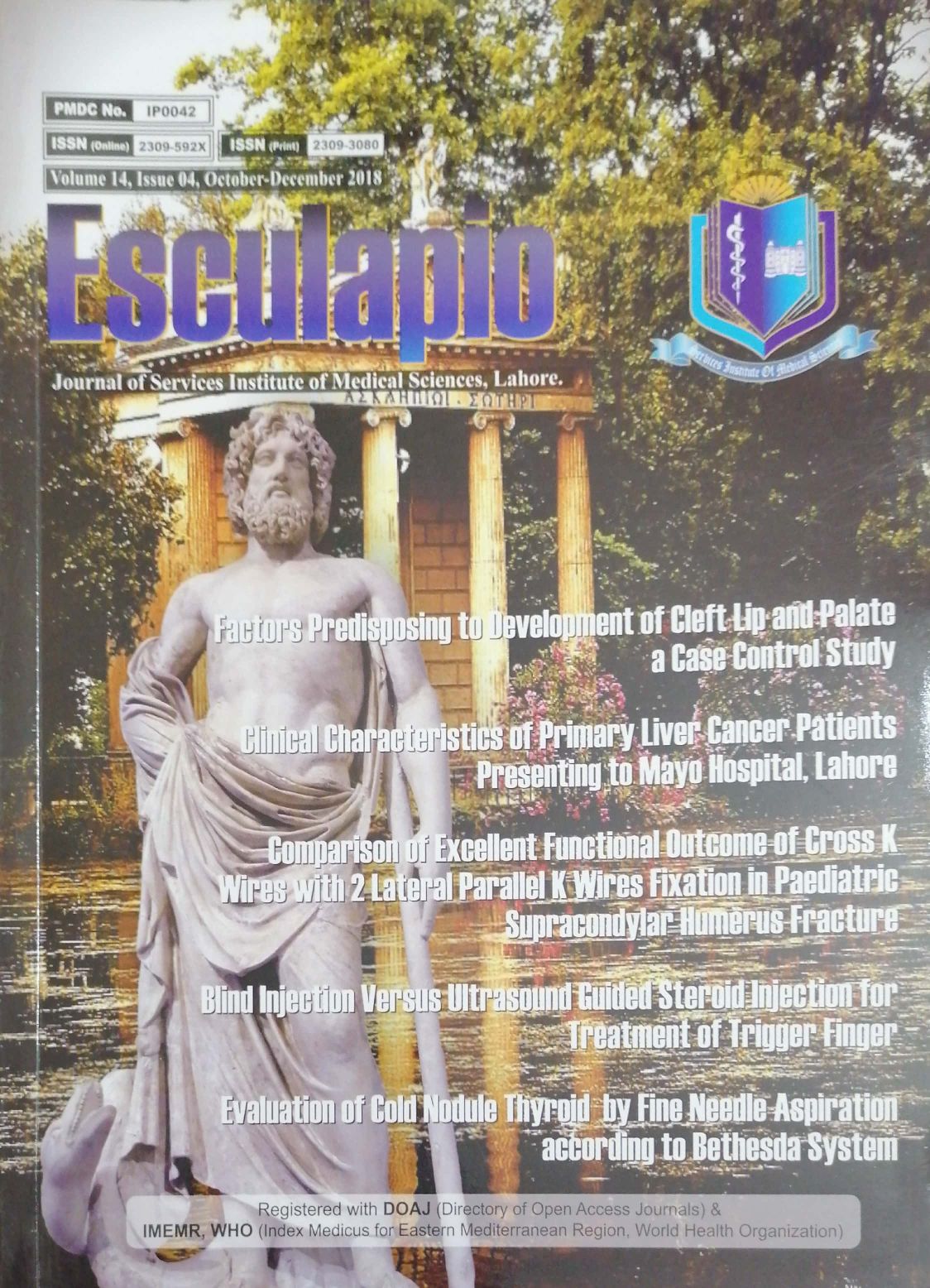Use of Autologous Platelet Rich Plasma Patch in the Repair of Hypospadias, our Experience
DOI:
https://doi.org/10.51273/esc18.71444Keywords:
autologous platelet rich plasma patch, urethrocutaneous fistula, tubularised incised plate urethroplastyAbstract
Objective: To assess the efficacy of autologous platelet rich plasma patch as a water proof
sealant in the repair of hypospadias.
Methods: Study was carried out in the Department of Pediatric Surgery, SIMS/ Services
Hospital, Lahore from July 2017 to July 2018. Hypospadias repair was done by using platelet rich
plasma patch as a second layer over urethral repair. The platelet rich plasma patch was prepared
from patient's own venous blood sample by centrifuging the sample at a fixed rate for fixed period
of time. Statistical data was analysed by simple descriptive statistics.
Results: A total of 88 patients were operated for hypospadias repair during this period. The age
of patients varies from 14 months to 13 years. Most of the patients fall between the age of 02 years
to 08 years. Seventy patients were of distal shaft hypospadias, six were of mid shaft and twelve
were of proximal shaft hypospadias. Ten out of 88 patients, developed urethrocutaneous fistula.
Overall fistula rate was 11.36%.
Conclusions: Autologous platelet rich plasma is not only cost effective but also effective as a
water tight second layer in reducing the incidence of uretherocutaneous fistula after hypospadias
repair










